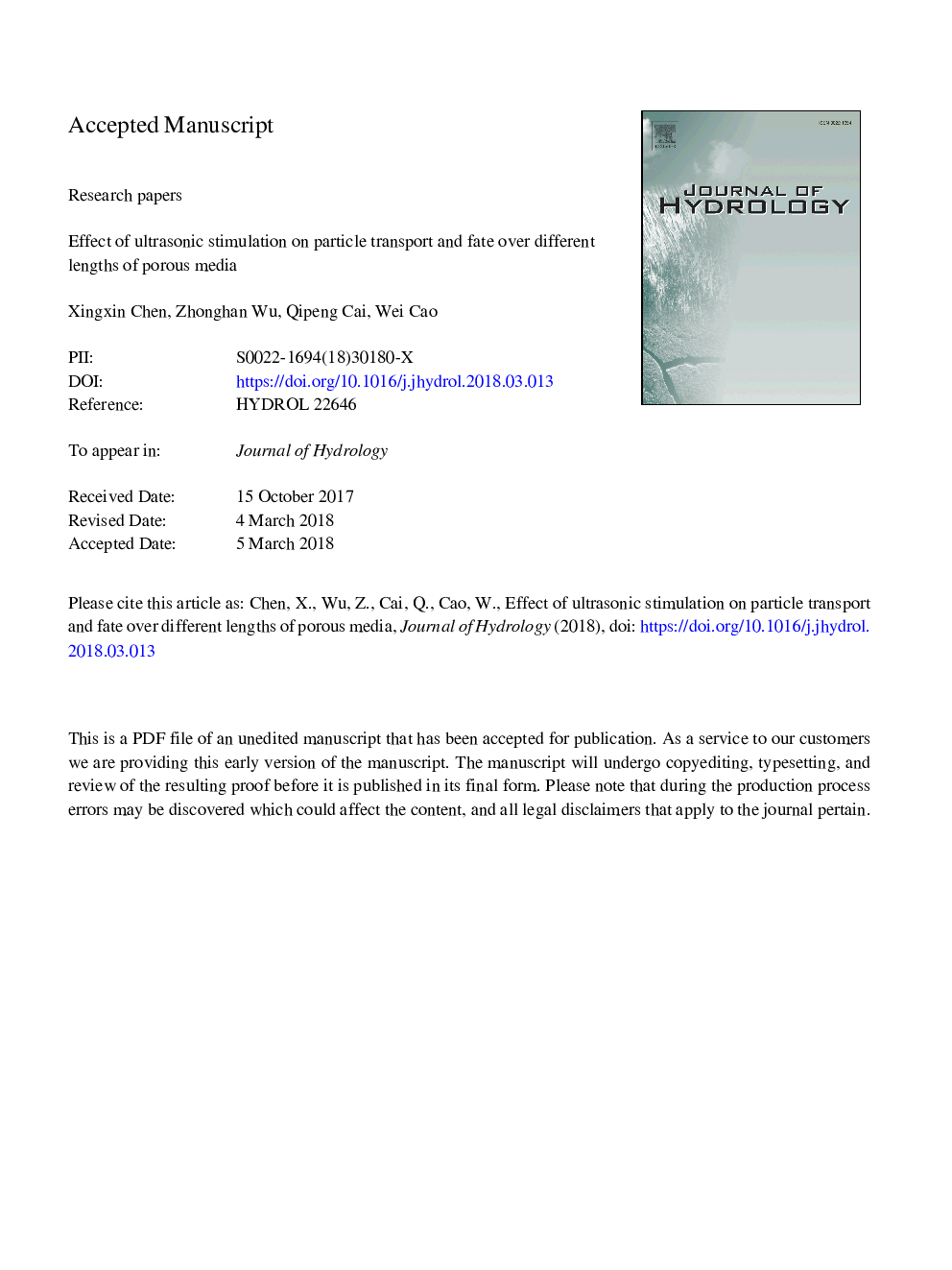| Article ID | Journal | Published Year | Pages | File Type |
|---|---|---|---|---|
| 8894963 | Journal of Hydrology | 2018 | 43 Pages |
Abstract
It is well established that seismic waves traveling through porous media stimulate fluid flow and accelerate particle transport. However, the mechanism remains poorly understood. To quantify the coupling effect of hydrodynamic force, transportation distance, and ultrasonic stimulation on particle transport and fate in porous media, laboratory experiments were conducted using custom-built ultrasonic-controlled soil column equipment. Three column lengths (23â¯cm, 33â¯cm, and 43â¯cm) were selected to examine the influence of transportation distance. Transport experiments were performed with 0â¯W, 600â¯W, 1000â¯W, 1400â¯W, and 1800â¯W of applied ultrasound, and flow rates of 0.065â¯cm/s, 0.130â¯cm/s, and 0.195â¯cm/s, to establish the roles of ultrasonic stimulation and hydrodynamic force. The laboratory results suggest that whilst ultrasonic stimulation does inhibit suspended-particle deposition and accelerate deposited-particle release, both hydrodynamic force and transportation distance are the principal controlling factors. The median particle diameter for the peak concentration was approximately 50% of that retained in the soil column. Simulated particle-breakthrough curves using extended traditional filtration theory effectively described the experimental curves, particularly the curves that exhibited a higher tailing concentration.
Related Topics
Physical Sciences and Engineering
Earth and Planetary Sciences
Earth-Surface Processes
Authors
Xingxin Chen, Zhonghan Wu, Qipeng Cai, Wei Cao,
